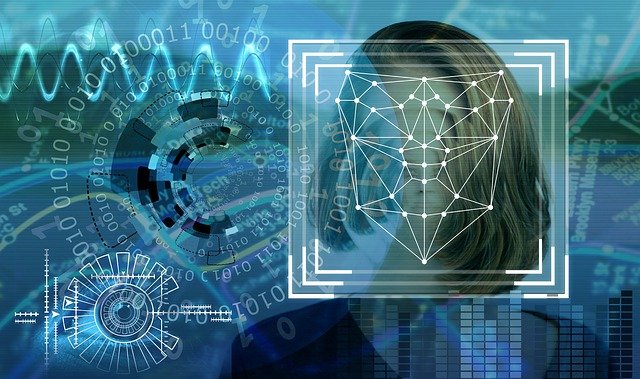Face recognition deep learning is the process of verifying and analyzing the identity of a person on the basis of their facial characteristics. It is done by capturing and comparing unique facial patterns. Facial recognition is the most preferred biometric technique. It has widespread uses in various industries. According to a report, the face recognition market is estimated to grow to $3.2 billion in 2019 and is expected to expand to $7 billion by the end of 2024. Law enforcement agencies, marketing and retail, and the healthcare sector are greatly benefitted industries from facial recognition deep learning technology.
Face Recognition
The surge in AI and ML has propelled the growth of face recognition biometric measures. Deep learning (DL) is a special factor involved in facial recognition technology. DL is a part of machine learning which in turn is the subset of artificial intelligence. It works exactly in the same way as that of a human brain.
How Does Facial Recognition Work?
It is an efficient system using a series of steps to accurately verify individuals. Let’s see how it works to complete the process of analyzing human faces.
A person’s face undergoes a lot of changes with time. Facial recognition deep learning considers multiple factors like aging, plastic surgery, facial hair, cosmetics, accessories, and many more. These factors combined help in the elevation of facial recognition technology.
Read More: The global facial recognition market size stood at USD 4.35 billion in 2019 and is projected to reach USD 12.92 billion by 2027, exhibiting a CAGR of 14.8% during the forecast period.
There are two steps of verifying individuals:
Pre-processing Stage
It further divides into the following steps:
a) Face Detection
This is the first step in face recognition. It identifies if the given sample consists of a human face or not.
b) Face Alignment
Face recognition software may have to experience the fact that our faces are not aligned in any particular manner in the sample. They might be blurred or in a side profile. It highlights the countering lines of the face in the provided sample.
Recognition Stage
It is the second step in facial recognition deep learning which is further divided into two steps:
a) Feature Extraction
This is the most critical step in recognition technology. It reads the geometry of individuals’ faces in the sample. It captures features like eyes, chin, nose, lips, the distance between eyes, distance from forehead to chin, length of the jawline, and more. The data captured creates a specific facial signature that can be used by algorithms to recognize a face.
b) Feature Matching
Finally, in the last stage, the data extracted is compared to the database of facial signatures to find a match.
Significant Concerns Of Facial Recognition Deep Learning
Cameras being installed everywhere in this age are capturing individuals’ faces regardless of their choice. A lot of people support this security measure, however, the number of individuals who have raised questions on this technology can not be neglected as well. They consider it against human rights and basic ethics. Following are some concerns over the current and future scope of face recognition technology:
1. Less Security
Once your data is saved in the database, there is no coming back. You forfeit the right to who may ever end up accessing your profile.
2. Privacy Breach
This is one of the significant concerns which divides people. For instance, individuals are being monitored at public places without their consent and also students are kept under the camera to keep a record of their activities and many other examples can be presented in this regard.
3. Accuracy Issues
People also have concerns with the accuracy of facial recognition deep learning technology and whether they include any biases. Misidentifying someone for illegal acts can lead to being abused by law enforcement agencies.
4. Lack Of Regulations
Citizens often see a lack in implementing government policies therefore they think the policies in facial recognition deep learning can also be misused by the bad actors.
Industries Using Facial Recognition Technology
There are countless data that companies have to manage on a daily basis. Managing these records manually is not a favorable task as it does not ensure the authenticity of the process.
The human intervention also increases the falsification chances in the process. But thankfully, the introduction of automated technologies in the system has increased the productivity of business operations. Among the industries, the top adopters of facial recognition deep learning are the healthcare sector, government agencies, private corporate and law enforcement agencies.
Conclusion
Today the increasing number of frauds has led businesses to incorporate valid methods of verification processes. Facial recognition deep learning analyzes the facial features of individuals that help them to secure their businesses from fraudulent activities and protect the vital credentials of their customers.
